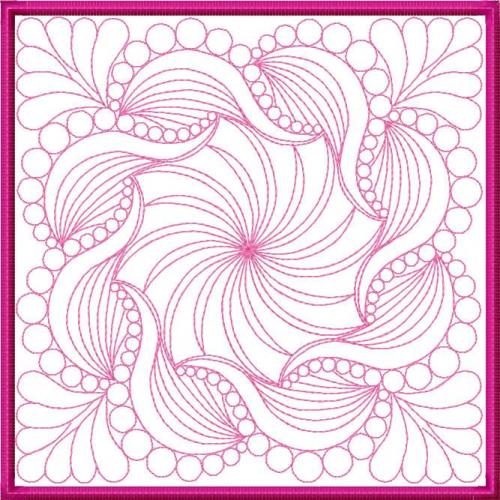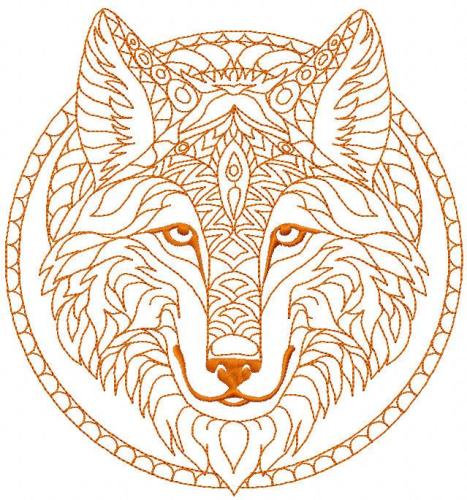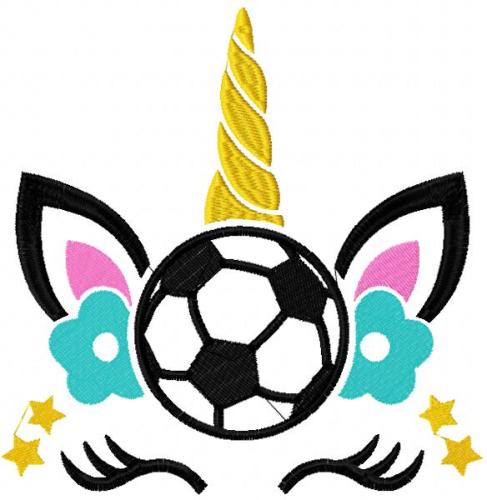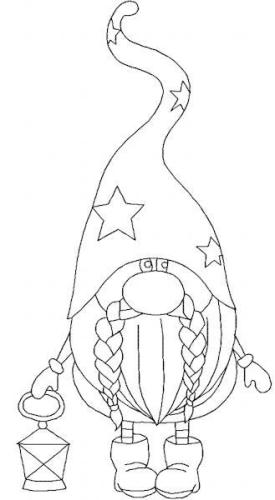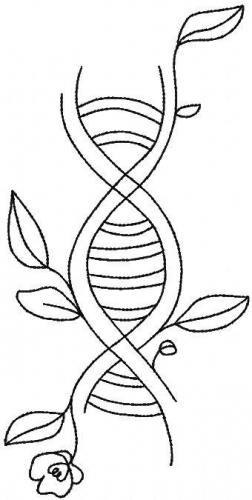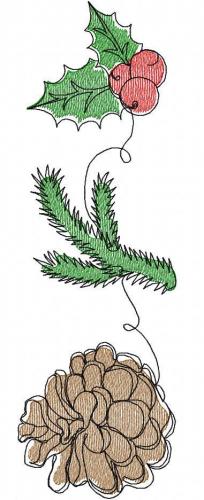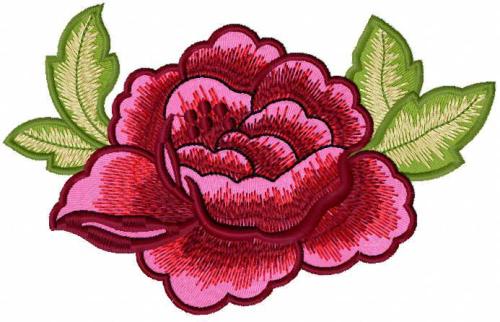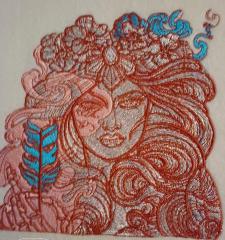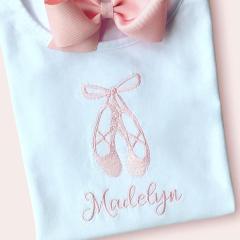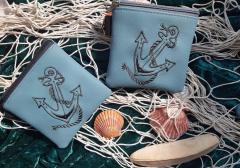Original text by Marina Belova
A needle is the most important part of the stitch-forming mechanism on embroidery machines.
How the needles are made
A blank for a needle is a piece of wire that is shaped mechanically, and the ear is formed in it. Then the eye is either chemically or mechanically planarized to remove burrs. After that, a size and a brand are indicated on the needle. The final step involves smoothing and polishing of the surface. The needle is first clad in chromium, then in nickel.
Chromium sticks better than other metals, it dissipates heat and works well with both natural and synthetic fibers. Nowadays you can find more expensive needles with new kinds of coating, such as teflon, titanium nitride and ceramic, which are much more durable than chromium and, therefore, more longevous.
Anatomy of a needle
A needle consists of the following parts:

Shank, which is the upper, the thickest, part of a needle that is inserted into a needle carrier and is secured with a screw clamp. A needle for industrial embroidery has a rounded shank, and one side of a shank of a needle for home embroidery is flat.
A blade is a narrow part of a needle that penetrates the fabric. The diameter of a blade defines the size/number of a needle.
Taper (also called shoulder) is a sloping transition area between the shank and the blade.
Butt is a dull part of a needle on top of the shank.
A tip is a sharp end of a blade.
A point is a part of a blade between the eye and the tip.
An eye is an opening that is perpendicular to the blade, through which the thread is passed. An embroidery needle has a bigger eye than a sewing one. This allows for the thread to pass through the opening more freely, whereby reducing the number of twists and, consequently, thread breaks.
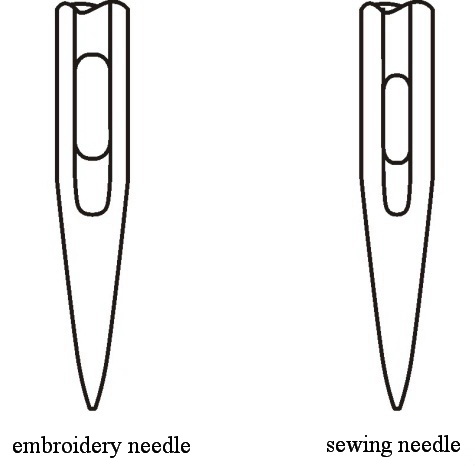
A scarf is a short cup-like section at the back side of the blade slightly above the needle's eye, which enables the point of a hook passing right beside the needle's center axis. Here the point of a hook comes very close to the eye and catches the upper thread to form a loop and make a stitch. The depth of the scarf varies in different types of needles.
A long groove is a furrow along the front part of the blade that goes from the shank to the eye. The cross section of a groove is about 40% of the needle width, which puts certain restrictions on the number of a thread that can be used with the needle of a particular size. The long groove guides the thread into the eye and allows it to pass freely and quickly.
Basic technical characteristics of a needle
Needle markings consist of 3 main parts:
- System
- Size
- Point type
One needs to know these specifications not only to insert the right kind of needle into the machine but also to consider thread type and particular qualities of the fabric on which the design will be embroidered.
Needle system
Needle system describes physical parameters:
- needle length
- shank length and diameter
- distance from the butt to the eye
- shape of the beveled edge
Some of these parameters determine the type of embroidery machine, and some – the particularities of a needle. All these specifications are put into numbers and letters. For example, DB x 1, DB x K5.
Sometimes several different marking systems can be found in one package. If we turn to history, we'll see that these tend toward standardization among the embroidery machines manufacturers. Each of those systems describes the same needles that can be inserted into one machine.
Needle size (number)

Most needles have as many as 2 numbers: one pertaining to European metric system and the equivalent USA one (Zinger). There, numbers usually have a slash in them – 90/14, 80/12 and so on. The real diameter of a needle is defined by a European system: 75/100 = 0.75 mm. There are needles from #55 to 130.
Needlepoint types
- Sharp needlepoint is used for almost all kinds of fabrics except knitwear.
- Acute/slim set point (SPI) – a very sharp needlepoint. It is recommended for leather and also dense and coarse woven materials.
- Sharp (K or no markings) is one of the most frequently used needlepoints in the industry. It is best for woven materials or dense fabrics that do not unravel; also good for the caps. A sharp needlepoint cuts through the fibers, and that reduces pull & push deformation.
- Normal round point (R)
- Ball point is used for almost all types of fabrics except knitwear.
- Light ball point (SES) – another one of the most popular needlepoints. The point being slightly rounded, this needle can be used not only for the woven materials but also for knitwear – it doesn't leave holes around the embroidery, as it pushed fibers apart, not cuts through them.
- Medium ball point (SUK) – the needlepoint is rounded and meant for the coarse knitwear and elastic materials.
- Heavy ball point (SKF) – a dull rounded needlepoint. It is designated for stretchy materials.
- Wedge point is used with leather and artificial leather.
- Narrow wedge point (cutting point, P). The last one is used for leather, vinyl and very dense materials. It leaves a cut instead of a hole, which makes it better for non-woven fabrics.
- cross point (CR)
- reverse twist point (RTW)
- triangular point (TRI)
- square point (SQ)
Needlepoint identifiers:
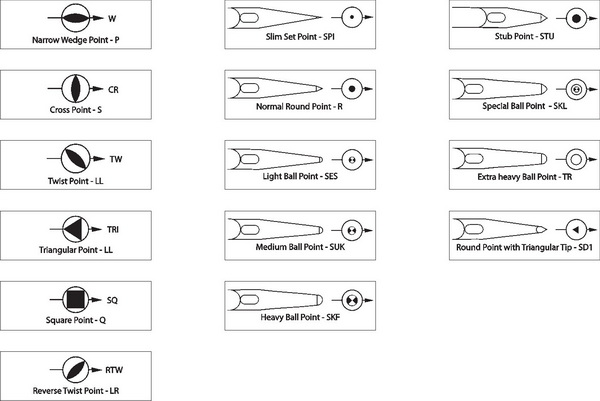
Some manufacturers offer the needles with Teflon coating. Those needles were created for the dense abrasive materials and watertight fabrics.
You can find needles coated with titanium nitride. These needles are meant for very dense materials. Also, they can be used during the embroidery that involves sticky materials. This coating prevents the blade from accumulating adhesive and it also warms up less than standard needles.
Reasons for changing your needle
- A dull needle can be a reason for the fabric puckering and distortion.
- A wrongly chosen needle can cause tension problems.
- It is not always right to use a needle of a bigger number because it may lead to the thread twisting and breakage.
- A thick needle makes unjustifiably large holes or cuts through the fabric, which may result in gaps between the stitches.
- A wrongly chosen needlepoint may lead to the cutting of the fibers, fabric distortions, and a sloppy edge.
- If you take a #30 thread and try to match it to a thin needle, you may get thread breakage as the result of the thread wearing away.
- If you take a #60 thread and try to match it to a thick needle, you may get loops. The reason for this is the thread moving without sufficient guidance from the groove.
How to choose a needle
One should choose the embroidery thread according to the density and the type of fabric and also the thickness and type of thread. Denser fabrics require needles of a bigger size and thin/loose ones – the opposite.
How needle size corresponds to the thread thickness and fabric thickness
|
Thread |
Thin fabric |
Thick fabric |
|
poly/rayon 60 |
70-75 |
70-75 |
|
poly/rayon 40 |
75-80 |
75-80 |
|
poly/rayon 30 |
75-80 |
90 |
|
rayon 12 |
100 |
100-110 |
|
twist 30 |
75-80 |
90 |
|
twist 30 |
75-80 |
90 |
|
cotton 50 |
100 |
100-110 |
|
cotton 30 |
75-80 |
90 |
|
cotton 20 |
80 |
90 |
|
wool/acrylic |
90-100 |
90-100 |
|
metallic 50 |
65-75 |
65-75 |
|
metallic 45 |
90 |
90 |
|
metallic 40 |
65-75 |
65-75 |
|
metallic 35 |
90 |
90 |
|
metallic 30 |
90 |
90 |
|
metallic 20 |
100 |
100 |
|
metallic 15 |
100 |
100 |
|
Mylar |
80-90 |
90 |
Matching fabrics/point types/needles
|
Fabric type |
Needlepoint type |
Needle # |
||
|
Home embroidery needles |
Commercial embroidery needles |
Home embroidery needles |
Commercial embroidery needles |
|
|
Thin satin |
H-M, H, H-J |
SPI |
70-75 |
65-70 |
|
Lycra, spandex, fabric stretching in all directions |
HE, H-SUK |
SES/SUK |
70-75 |
65-75 |
|
Thin cloth, poplin with spandex |
H-M, H, H-J |
SPI |
70-75 |
70-75 |
|
Natural thin leather |
H-J |
SPI/R |
70-80 |
70-80 |
|
Natural soft leather |
H-E |
SES |
75-80 |
75-80 |
|
Thin vinyl |
H-J |
R |
70-80 |
70-80 |
|
Thick vinyl |
H-E |
SES |
75-80 |
75-80 |
|
Transparent natural/synthetic fabrics |
H-M, H, H-J |
SPI |
65-75 |
65-70 |
|
Thin knitwear |
H-E |
SES |
70-75 |
70-75 |
|
Voluminous knitwear |
H-SUK |
SUK |
70-75 |
70-75 |
|
Organza |
H, H-J |
R/SES |
70-75 |
70-75 |
|
Thin nylon |
H, H-J, H-E |
R/SES |
70-75 |
70-75 |
|
Dense nylon |
H-J, H-E |
R |
90 |
80-90 |
|
Polyester taffeta |
H-E |
SES |
70-75 |
70-75 |
|
Corduroy, velvet |
H-E |
SES |
75 |
75 |
|
Terry cloth |
H-E |
SES |
75 |
75 |
|
Piled fleece |
H-E |
SES |
75 |
75 |
|
Fake fur |
H-E |
SES |
75 |
75 |
Read here how to match a thread to a needle without having these tables at hand.
-
 1
1

